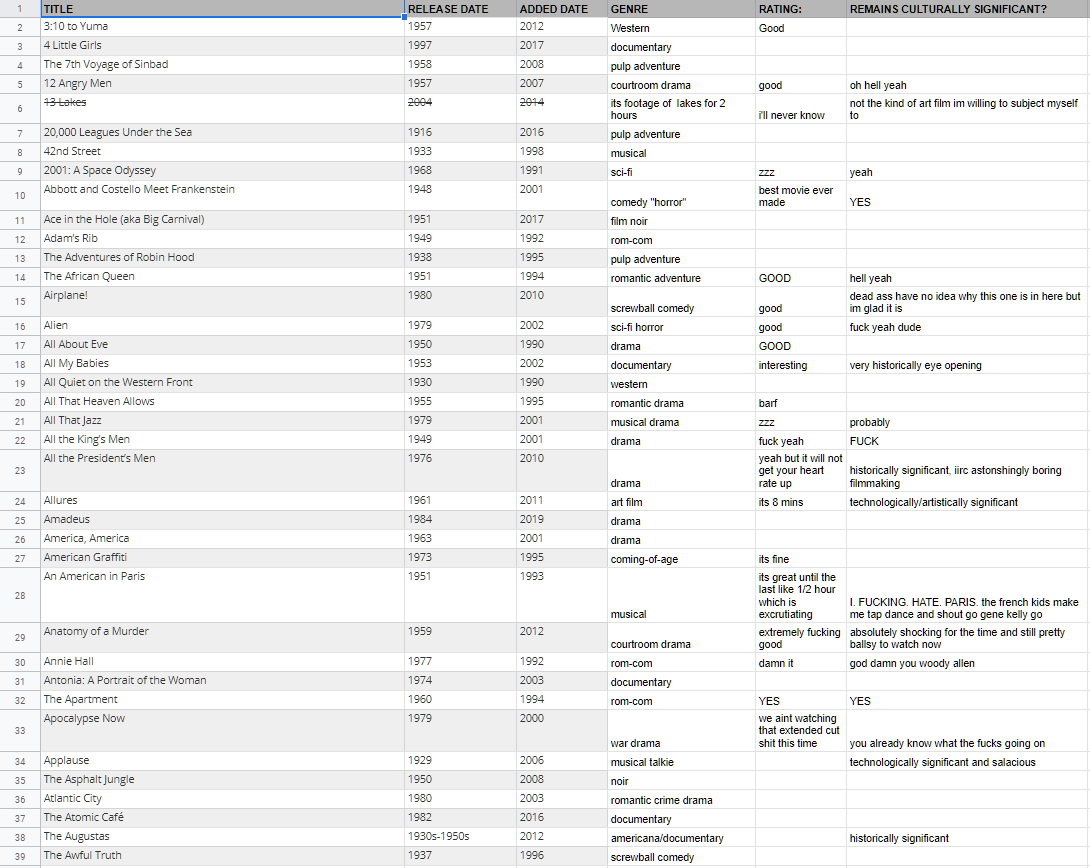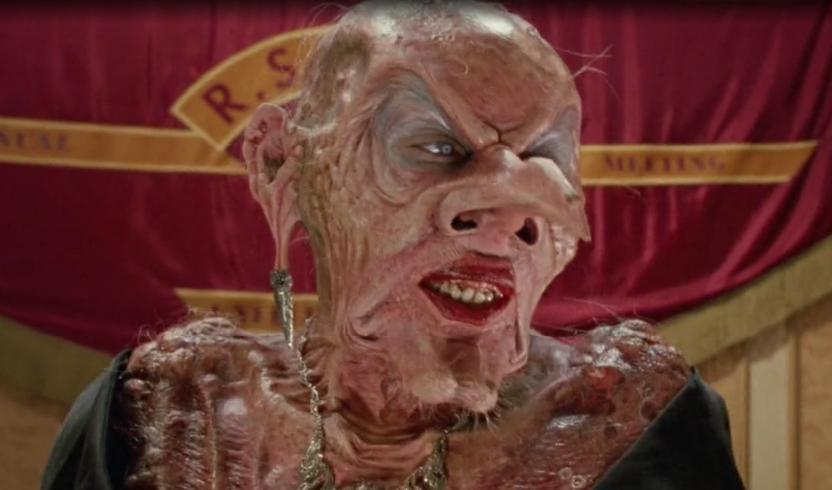
One of the most persistent genres of children’s fiction is “oh no! I’m a little creature!” in which the protagonist of the work is suddenly chucked headfirst into a situation that requires their cunning and determination to work their way out of since they have been robbed of the advantage of their opposable thumbs and physical form. Typically these stories revolve around a lack of physical agency and loss of control over their understanding of their personhood (an unsurprisingly popular plot given that puberty is right around the corner) usually at the hands of an outside force or as some kind of cosmic punishment for child crimes (rudeness to parents, disobeying god, not washing hands, etc). These plots are the backbone of both pretty much every single Goosebumps book ever made (when the plot was not “I found a weird thing!”) and also the story of Roald Dahl’s “The Witches”.
The 1990’s movie adaptation of “The Witches” offers a lighthearted horror story about escaping and defeating adults whose only goals are to hurt you (and people like you) and inflict bodily damage upon you for no reason other than inherent cruelty. In execution, the horror of the subject matter is a reasonable amount of terrifying instead of deeply scarring; it is terrifying to realize that there are people in the world, possibly near you or who claim to care for you, who take pleasure in causing you to suffer for something over which you have no control. But to know that you can conquer and work to repair the damage these people can attempt to drive into the world is the message that children suffering at their hands, whether briefly or daily, deserve to hear and take to heart. I love horror stories intended for children; they tap into some extremely primal part of our brains that can be understood by everyone no matter your personal experience. Horror for children is meant to be simple, uncomplicated and straightforward.
It’s been ages since I’ve read “The Witches”; I must have been in elementary school so I can’t attest to the accuracy of the movie to the classic Roald Dahl book outside of the fact that the ending is wildly different. In fact, I think the point of the ending has been warped so badly that it obliterates an incredible message (more on this later). At least I can say that the tale presented to you in this BLESSEDLY trim 91 minutes is pretty pleasant and shines with a cast of extremely british actors giving some extremely hammy (except for Rowan Atkinson, who is the straight man for whatever very mysterious reason) performances that rise to match the ridiculousness the roles of cackling child-hating witches calls for.
The kid actors are uh…well. I’m overly harsh on kid performances in general so my opinion needs to be taken with a grain of salt. Kid performances are very rarely good and usually fly all the way to “nails on chalkboard” levels of cloying faux-cuteness due to terrible directing and writing by people who haven’t interacted with kids for over 30 years, but in this case one of the actors is just kind of a dud. Jasen Fisher in the role of the protagonist is actually pretty great. The other kid, who is dressed like a 40 year old New Jersey mechanic but talks like a chimney sweep is pretty terrible.
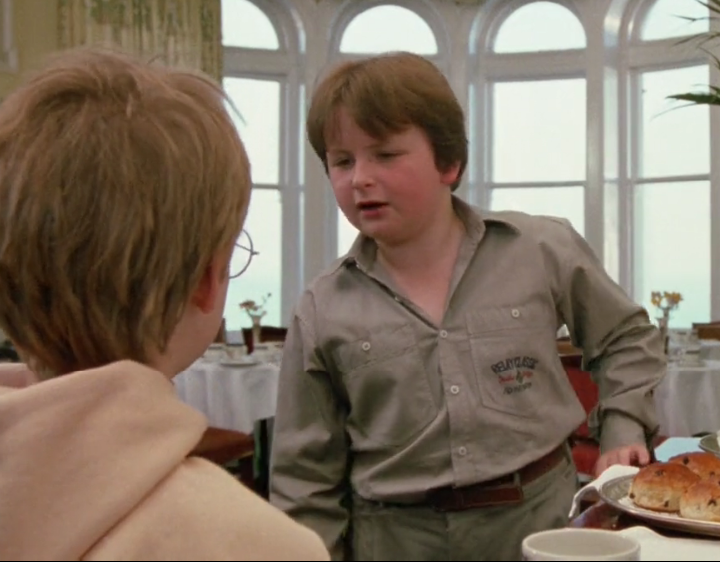
The kid actors are doing the best they can and both of their voice acting is much better than the physical direction they were given. Speaking of which, the puppetry is, unsurprising given that it’s the Jim Henson Company (the last movie before Henson’s death), is fantastic. It’s hard to imagine what this movie would have looked like in less capable hands when it came to the practical effects or the directing. I’m actually not familiar with director Nicolas Roeg’s other work, but a quick glance at his filmography reveals this movie was a heck of a turn for him content wise.
I’m pretty sure everyone who follows me is like me and a huge sucker for a great practical effect and my favorite in this movie is that dang ol’ mouse puppet. I cannot believe how CUTE the mouse is. The most jarring part of the movie is when it switches between using a real mouse and using the little cartoony but so very endearing little fucker. It should have stuck with the puppet the entire time and thrown out using live mice entirely. THIS is a puppet I love and want to succeed in life. This is a puppet I long to see thrive.
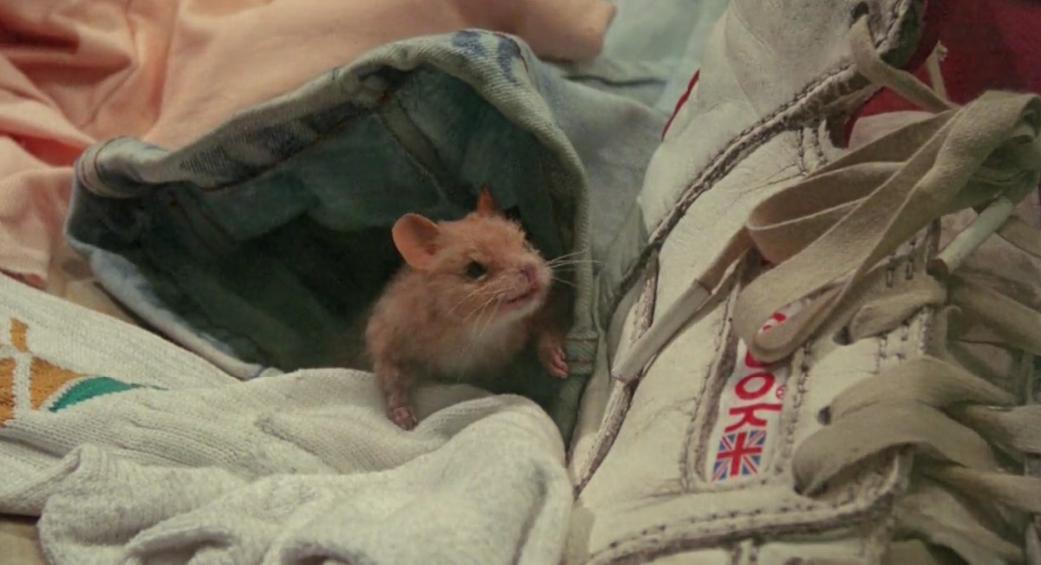
There is one example of some seriously impressive editing where the head witch (Anjelica Huston, with maybe the intentionally worst french accent in history) appears to put her fake rubber face back on without an obvious cut (it’s hidden by a woman in the foreground briefly moving in front of the camera, but appears as one seamless action). The makeup work to transform Huston into the Grand High Witch looks like it must have been absolutely tedious to have been subject to, but creates a very memorable looking hideous visage to shock and stick in a younger audience’s head. However, the best effect hands down is when the Grand High Witch casts a spell which is visually represented by laser beams exploding out of her eyeballs to cause the offending member of her coven to erupt into flames.
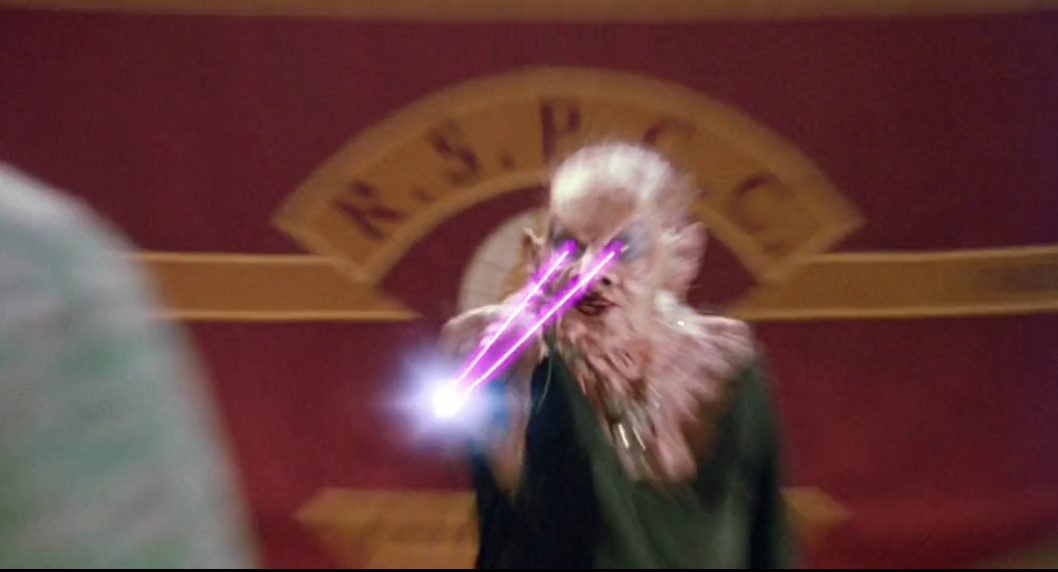
Plot spoilers to follow, if you don’t want to be spoiled for a 30 year old children’s movie.
After being introduced to the concept of witches by his grandmother (who lost her childhood friend to a child-hating witch), the protagonist, a young boy named Luke, is turned into a mouse as part of an evil plot by the Grand High Witch to destroy all the children in England. The witches of England have gathered under the guise of attending a dinner for “The Royal Society for the Prevention Of Cruelty to Children” at the same time that Luke and his grandmother are attending the same hotel while on a vacation for the grandmother’s health. He and another boy, Bruno, are used to demonstrate a potion that transforms children into mice so that they will be killed by exterminators, predators or the children’s own parents. As mice, the boys work with the grandmother to steal the potion from the grand high witch’s room to pour into the soup they will eat at that night’s celebratory dinner. They succeed and all the witches of England are transformed into mice in a delightfully terrifying transformation sequence which causes the whole ballroom to fall into chaos.
The messaging of Dahl’s books have always been a bit muddled; they flit between modern Brother’s Grimm-esque morality tales where the protagonist is put through repeated trials to come out stronger in spite of the troubles they’ve traversed but hinge on lazy stereotypes that no longer hold up to scrutiny under the lens of the modern day reader/film watcher. There is always a hapless fat child who acts a foil to the good thin child, or in this case a cabal of evil, ugly childless women who cause a boy to distrust the entire gender. The movie has deliberately softened the blow of the sexist undercurrents (I believe it’s much more overt in the original book) by introducing, in the last 20 seconds of the movie, a witch who was slighted by the Grand High Witch who now uses her powers for good instead of evil. Does this fix the narrative’s central misogynistic problem? Not entirely, and what it might attempt to solve completely obliterates the most important line, and message, of the film. Please understand that this is a book (and really, an author) who I feel explicit cognitive dissonance toward. I like many aspects of this story, but dislike much of it as well. I find myself excusing the worst parts of the story to uplift the parts that speak the most to me. Because of that I am asking you to indulge me when I discuss the final scene of both the movie and the book and why the change, while understandable, does the message to children a disservice.
In this movie, Luke is turned back into a human by the aforementioned good witch (which kind of raises some questions about Luke and his grandmother’s future plans to kill every witch in America next; what if they’re decent or can become decent?). The movie is a simple adventure story where the protagonist overcomes a trial. It’s good fun and I can’t fault it for that. In fact I liked this movie a lot! It’s silly and scary! But…
In the book, he remains a mouse. Luke is permanently changed by the experience and no matter what he cannot go back to the child he was before he was hurt. But by the end of the book he has embraced it and refused to let the experience change who he is as a person…er, mouse. Explicitly in the text of the book, Luke is likely only to live another few years because of his transformation, but he is comfortable with this fact, as he does not want to outlive his old grandmother.
A refusal to be defined by your suffering because you are buoyed by the love of someone who understands it is the bittersweet ending that this movie (understandably) lacks. And yet, “The Witches” is a totally pleasant movie that would be good for brave or horror seeking kids looking to dip their toes in the genre. In the end, at least, the best and most poignant line of the book is preserved:
“It doesn’t matter who you are or what you look like, so long as somebody loves you.”
Also, who doesn’t want to be that little mouse puppet. Come on.
Okay, there’s actually one more thing I need to address in this review but there’s no organic way to fit it into the above paragraphs but in the movie, when Luke is a mouse, he gets cut by a chef’s clever and a piece of his tail gets chopped off. How does this translate to when he gets turned back into a human?! Is it like a finger or is a piece of his butt missing?!? The fact that this was NOT addressed in any way has kept me up at night. This is really the greatest mystery of the whole movie.
